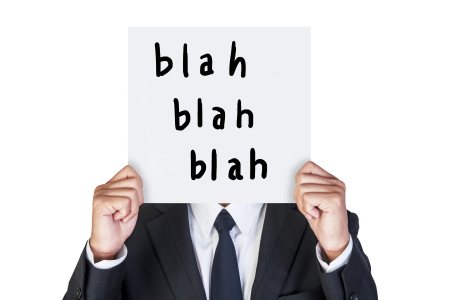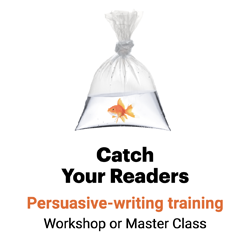Don’t start with the blah blah blah
The background might be an important component of your story. After all, the readers might need some of the following elements to fully understand your story:

- A definition
- A short description of a key concept
- A one-paragraph history of the subject
- Additional facts or details that give context to the story or “prove” your point
Background comes third
But readers don’t need this material first. That’s why you:
- Grab your readers’ attention in the lead
- Make your point in the nut paragraph
- Then fill in the blanks in the background section
Remember, the background comes third.
Start specific, then broaden your lens
Good story structure starts with the details, then expands to the background.
Don’t start wide, then get granular
Background:
XYZ Company is known around the world for exceptional-quality petroleum-based pet food solutions.
Nut graph:
Many people may not know that XYZ Company is also building a global reputation for energy-efficient operations.
Lead:
In just the last year, XYZ Company has saved 100 million kilowatt-hours of electricity. That’s the amount of energy used by 9,500 typical homes each year.
Instead, start with the details, then broaden to the background:
Start with the specifics
… Then expand to the background.
Lead:
XYZ Company saved 100 million kilowatt-hours of electricity last year — enough to fuel 9,500 typical homes a year.
Nut graph:
It’s all part of XYZ Company’s new mission to build a global reputation for energy-efficient operations.
Background:
XYZ Company — maker of petroleum-based pet food solutions — is going green by …
So start with the lead, follow up with the nut graph and then deliver the background.

Leave a Reply